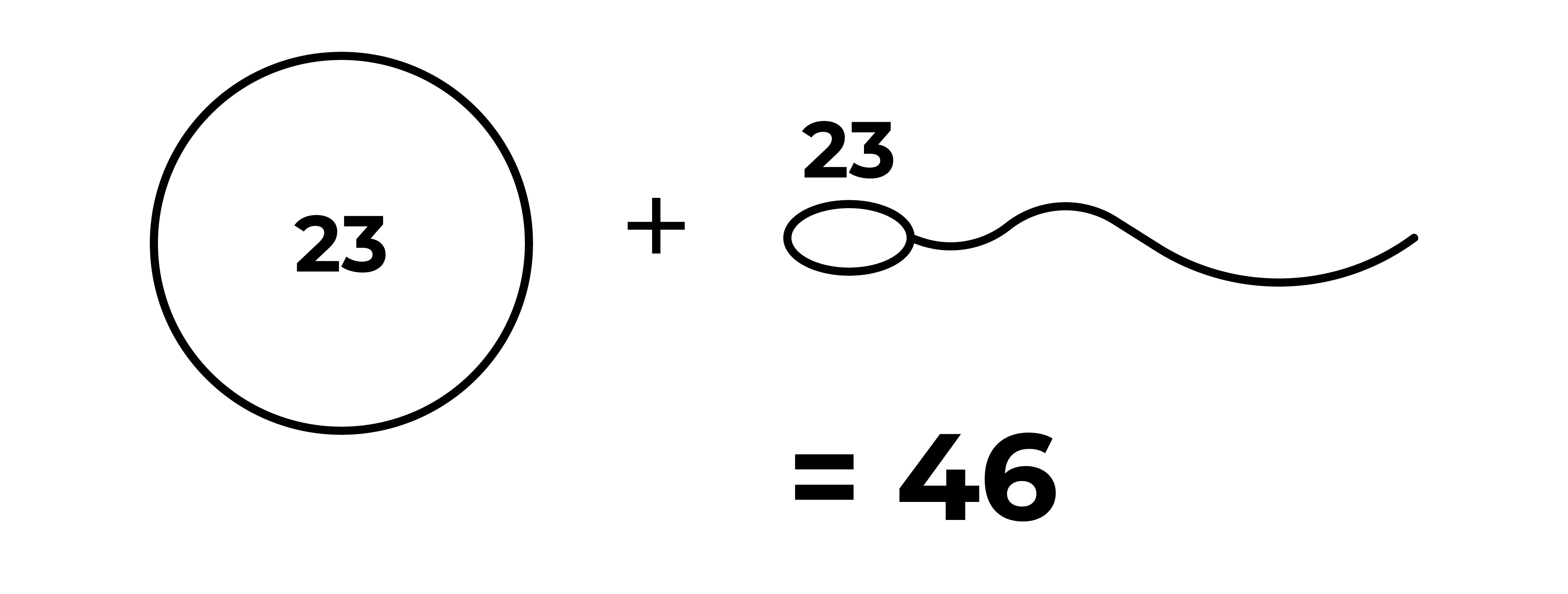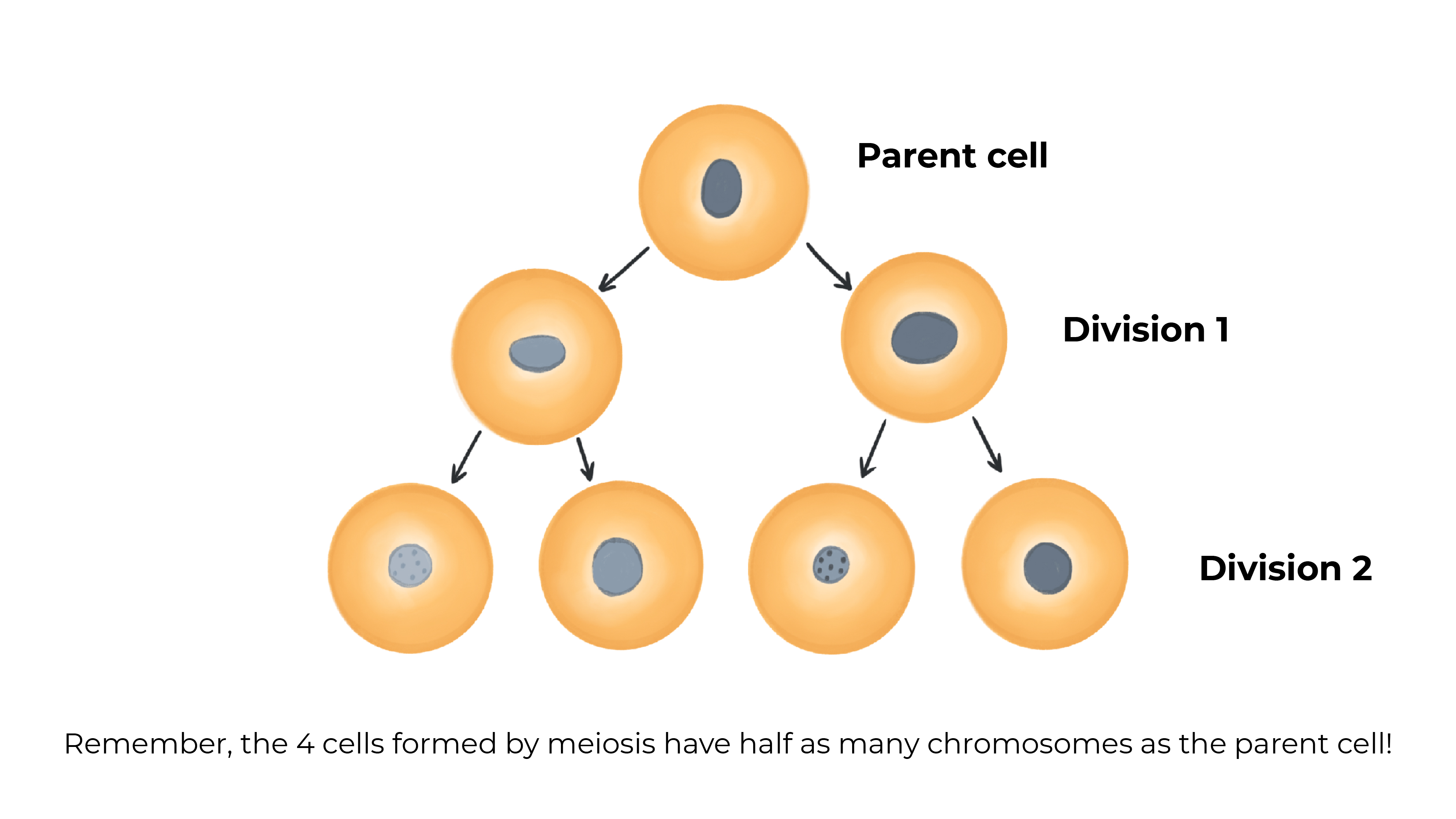7. Heredity in Animals
Introduction to genetics
By the end of this session you will be able to:
- Describe what is meant by the term ‘genetics’.
- Describe the principles behind inheritance via sexual reproduction.
- Explain key words and phrases.
DNA


DNA in the cell

What do we mean by genetics?
Genetics is the study of genes and their effects.
A gene is a section of DNA that codes for a particular characteristic.
Chromosomes are made up of hundreds of genes.

What do we mean by genetics?
- We are studying the effect that DNA has on the organism that it belongs to and how that DNA is inherited by offspring and the effect that this has.
Chromosome numbers
Chromosomes from a normal human male.

Chromosome numbers
Different animals have different numbers of chromosomes:

60
Chromosome numbers
Different animals have different numbers of chromosomes:

54
Chromosome numbers
Different animals have different numbers of chromosomes:

64
Chromosome numbers
Different animals have different numbers of chromosomes:

78
Chromosome numbers
Different animals have different numbers of chromosomes:

38
Chromosome numbers
Different animals have different numbers of chromosomes:

56
Chromosome numbers
Different animals have different numbers of chromosomes:

88
Chromosome numbers
Different animals have different numbers of chromosomes:

2 (female), 1 (male)
Chromosome numbers
Different animals have different numbers of chromosomes:

80
Chromosome numbers
In a real quirk of nature:
- increasing the number of chromosomes does not seem to increase either the size of the animal or its complexity.
Inheritance
Sexual reproduction is good for a species because it increases the diversity seen within the species.
But how?
Basic reproduction
Female egg (ovum) + Male sperm = new life.

Basic reproduction
Chromosomes contain genes (instructions for a particular characteristic), the offspring receives one set of instructions from the mother and one set of instructions from the father.
When we look at inheritance, we look at how these instructions (genes) are interacting.
What is a Haploid cell?
- only half the number of chromosomes (i.e. a sex cell has 23 pairs of chromosomes).
What is a Diploid cell?
- has the full number of chromosomes (46 pairs).
Genetics
Genotype – total genetic make-up of an individual.
Phenotype – observable looks and behaviour of an individual. An interaction between genotype and environment.
Genetic information
Locus – the gene's own location on the chromosome
Allele – different forms of the same gene, blue or brown eyes.

Meiosis
This is a type of cell division that results in four daughter cells each with half the number of chromosomes of the parent cell, as in the production of gametes.

Deoxyribonucleic Acid
DNA (short for deoxyribonucleic acid). The material containing the genetic instructions used in development and function of an organism. DNA is arranged in double helix–shaped strands.

Mutation of genes
A mutation is a change in a gene, and it gives rise to new alleles at a particular locus.
It’s the way we get new genetic variation and can form new breeds, seen best in dogs. The Bedlington terrier is a woolly version of a whippet, and miniature cattle and horses have come from mutations.
Mutation rates for a gene are usually very low, e.g. one in a million.
Mutations can be hastened by radiation, certain chemical treatment, abnormally high or low temperatures or by other genes carried by the organism.
Naming Genes
We use letters for this and there is an international convention to avoid confusion. Some genes are called after the person discovering them, e.g. Inverdale gene in Texel sheep.
The capital letter is used for the dominant allele and the lower-case letter for the recessive.
Example:
P = polled allele in cattle, p = horned allele
Genotype and phenotype
- W = white wool in sheep
- w = black wool colour
When we describe the animal, as it has a ‘diploid’ or double state of the allele, two letters are used. Example:
- PP = polled cow
- pp = horned cow
- WW = white sheep
- ww = black sheep
Heterozygous and Homozygous pairs of chromosomes
A homozygote is an individual that has identical alleles at a given locus. E.g. PP or pp.
A heterozygote has non-identical alleles at a given locus. E.g. Pp.
When you mate a polled bull (PP) to a polled cow (PP) – the offspring are all polled (PP).
When you mate a horned bull (pp) to a horned cow (pp) – the offspring are all horned (pp).
When you mate a polled bull (PP) to a horned cow (pp) the offspring are all polled (Pp). The dominant big P allele stops the small p allele from being expressed.
Note these are heterozygous as they have non-identical alleles and consequently won’t breed true.
Sex-linked Chromosomes
Sex-linked is a trait in which a gene is located on a sex chromosome. The term generally refers to traits that are influenced by genes on the X chromosome. This is because the X chromosome is large and contains many more genes than the smaller Y chromosome.
In a sex-linked disease, it is usually males who are affected because they have a single copy of the X chromosome that carries the mutation. In females, the effect of the mutation may be masked by the second healthy copy of the X chromosome.
Males : XY
Females : XX
Lethal genes
This is a gene that in some conditions, e.g. if it is homozygous, may prevent development or cause the death of an organism or its germ cells. The gene can also be called the ‘lethal factor, the lethal mutant, or a lethal mutation’.
Examples:
- Dropsical (bulldog) calves in cattle.
- Imperforate anus in calves, sheep and pigs.
- Hydrocephalus in cattle, sheep and pigs.
- Cleft palate (general).
- Nakedness in poultry.
Estimated Breeding Value
Estimated Breeding Values (EBVs) are measurements of genetic potential, which can be used to assess an animal’s breeding merit for a specific trait.
The value is given a + or a - and is linked to important traits.
Traits in Rams
Trait
| Eight Week Weight (kg) | = | Early growth rates |
| Scan Weight (kg) | = | Growth rate |
| Muscle Depth (mm) | = | Muscling across the loin |
| Fat Depth (mm) | = | Leanness |
| Litter Size (% lambs) | = | Female prolificacy |
| Maternal Ability (kg) | = | Milking ability |
| Mature Size (kg) | = | Ewe mature size |
Traits in Beef Bulls
Paternal Traits
Ease of Calving Attributes
- Birthweight (kg)
- Gestation Length (days)
- Calving Ease (%)
Growth and Carcase Attributes
- 200 Day Growth (kg)
- 400 Day Growth (kg)
- Muscle Depth (mm)/ Eye Muscle Area (cm2)
- Backfat Depth (mm)
Maternal Traits
The beef cow will also have traits that influence its progeny, its development and carcase:
- 200 day milk in kg
- Calving ease
- No of daughters as % of offspring
Conclusion
At the end of this session you should be able to:
- Describe what is meant by the term ‘genetics’.
- Describe the principles behind inheritance via sexual reproduction.
- Explain key words and phrases used in genetics in farming.